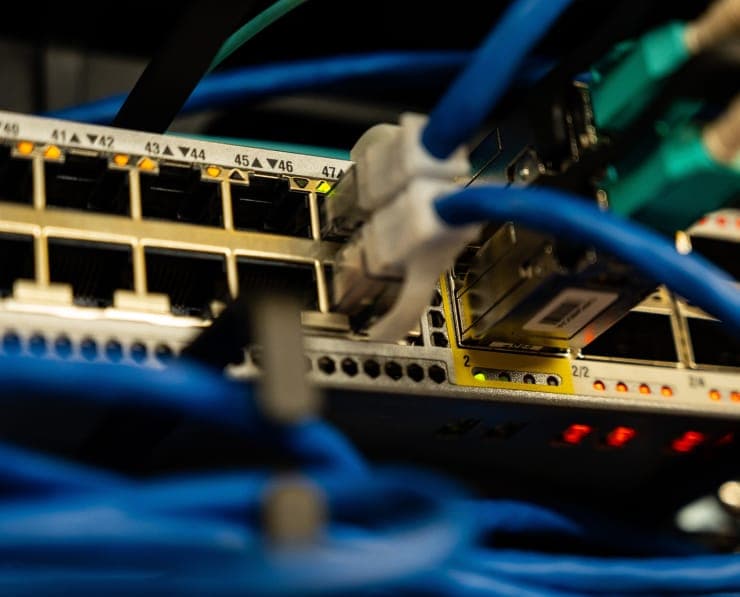Student Feedback
300-420: Designing Cisco Enterprise Networks (ENSLD) Certification Video Training Course Outline
CCNP Enterprise ENSLD (300-420) ...
CCNP Enterprise ENSLD (300-420):...
CCNP Enterprise ENSLD (300-420):...
CCNP Enterprise ENSLD (300-420):...
CCNP Enterprise ENSLD (300-420):...
CCNP Enterprise ENSLD (300-420):...
CCNP Enterprise ENSLD (300-420):...
CCNP Enterprise ENSLD (300-420):...
CCNP Enterprise ENSLD (300-420):...
CCNP Enterprise ENSLD (300-420) ...
CCNP Enterprise ENSLD (300-420):...
CCNP Enterprise ENSLD (300-420):...
CCNP Enterprise ENSLD (300-420):...
CCNP Enterprise ENSLD (300-420) : Designing EIGRP Routing
300-420: Designing Cisco Enterprise Networks (ENSLD) Certification Video Training Course Info
ENSLD 300-420 v1.1 Certification Prep – Full Course
Building Advanced Cisco Enterprise Network Solutions
What You Will Learn From This Course
• IPv4 Network Design Principles and Deployment
• IPv6 Architecture and Advanced Design Strategies
• Routing Protocol Fundamentals, including EIGRP and IS-IS
• OSPF, BGP, and Advanced Route Optimization Techniques
• IP Multicast Configuration and Management Practices
• Enterprise LAN Design and Emerging Technologies
• Advanced Campus Network Design Methodologies
• WAN Design for the Enterprise and High Availability Solutions
• Quality of Service Implementation and WAN Optimization
• SD-Access Architecture and Deployment
• SD-WAN Design Principles and Best Practices
• Network Automation and Programmability Essentials
• Solid Understanding of IP Addressing, Routing, and Switching Fundamentals
• Basic Knowledge of Enterprise Networking Principles, VLANs, and WAN Technologies
• Understanding Routing Protocol Behavior and Applications
• Awareness of Network Security Principles, including ACLs, VPNs, and Firewalls
• Introduction to SD-WAN and Software-Defined Networking Concepts
Learning Objectives
The objective of this course is to provide learners with a complete understanding of enterprise network design and prepare them to excel in the CCNP 300-420 ENSLD certification exam. By the end of this course, participants will be able to design scalable, reliable, and secure enterprise networks, implement advanced routing protocols, and optimize LAN and WAN environments for performance and availability. Learners will gain hands-on experience with software-defined networking technologies such as SD-Access and SD-WAN, and they will develop the skills to apply automation and programmability to complex network environments. The course also emphasizes building the knowledge required to troubleshoot network issues effectively and implement best practices for enterprise network security and performance.
Target Audience
This course is designed for network engineers, architects, IT professionals, and CCNP Enterprise certification candidates who are looking to advance their knowledge and skills in enterprise network design. Network administrators and professionals who want to develop expertise in scalable LAN and WAN architectures, routing protocol optimization, and modern software-defined networking technologies will also benefit. The course is suitable for students and learners who have foundational networking knowledge and are eager to deepen their understanding of enterprise network design to improve career prospects and certification readiness.
Requirements
The course is structured to provide a complete learning experience for professionals who are aiming to master enterprise network design. Participants will engage in practical lessons and real-world examples that help translate theoretical knowledge into actionable skills. Throughout the course, learners will work with lab simulations, network design exercises, and case studies to reinforce understanding. Access to network simulation tools or lab environments is recommended to practice configuration, testing, and validation of network designs. Learners will also benefit from following along with configuration examples and design scenarios that illustrate real enterprise challenges.
Prerequisites
To maximize the benefits of this course, participants should have a solid foundation in networking fundamentals. This includes a good understanding of IP addressing, routing, and switching. Basic knowledge of VLANs, WAN technologies, and enterprise network principles is required to follow the lessons effectively. Familiarity with routing protocols such as OSPF, EIGRP, and BGP will be beneficial but not mandatory, as the course provides detailed explanations and configuration examples. Awareness of network security concepts such as ACLs, VPNs, and firewall fundamentals will help learners better understand network design considerations. A general understanding of software-defined networking (SDN), network automation, and SD-WAN concepts will also be advantageous for participants seeking to gain advanced enterprise networking skills.
IPv4 Network Design Principles
The foundation of enterprise network design begins with IPv4 architecture. Designing IPv4 networks involves understanding subnetting, address allocation, and hierarchical network design principles. Proper IPv4 planning ensures optimal routing efficiency, scalability, and address utilization. Enterprise networks require structured addressing plans that support both current requirements and future growth. Key considerations include the segmentation of networks into subnets, implementing variable-length subnet masking (VLSM), and planning for route summarization to improve routing table efficiency. IPv4 design also involves analyzing network topology requirements, such as core, distribution, and access layers, and ensuring redundancy and fault tolerance through optimal device placement and routing protocol selection.
IPv6 Architecture and Advanced Design
With the growing adoption of IPv6, modern enterprise networks require proficiency in IPv6 design and deployment. IPv6 design principles include addressing strategies, prefix allocation, and transition mechanisms from IPv4 networks. Unlike IPv4, IPv6 provides a vast address space and built-in features for simplified routing and multicast. Enterprise designers must plan for efficient address utilization, route aggregation, and security considerations such as IPsec. Understanding IPv6 routing protocols and their integration with existing IPv4 infrastructure is critical. Best practices include dual-stack deployment, gradual migration strategies, and ensuring that IPv6 is fully supported across all network devices and services.
Routing Protocol Fundamentals
Effective enterprise network design relies on a thorough understanding of routing protocols. EIGRP and IS-IS are essential for dynamic routing in complex networks. EIGRP offers fast convergence, scalability, and ease of implementation, making it suitable for large enterprise networks. IS-IS provides a link-state routing mechanism that supports hierarchical network designs and robust traffic engineering. Network engineers must understand protocol behavior, convergence properties, metric calculations, and troubleshooting techniques. Proper routing protocol selection ensures optimal path selection, high availability, and efficient resource utilization across the enterprise network.
OSPF, BGP, and Route Optimization
OSPF and BGP are fundamental protocols in enterprise networks for internal and external routing. OSPF is widely used in campus and enterprise environments for hierarchical design, route summarization, and rapid convergence. BGP is critical for interconnecting enterprise networks with service providers and managing large-scale routing policies. Enterprise network designers must master route filtering, redistribution, and manipulation techniques to optimize network performance and security. Understanding protocol interactions, route advertisement strategies, and policy-based routing allows designers to maintain robust and scalable network infrastructures.
IP Multicast and Network Management
IP multicast plays a crucial role in optimizing bandwidth usage and delivering services such as video streaming and conferencing across enterprise networks. Proper multicast design involves understanding group management protocols, multicast routing, and source distribution models. Network management practices complement design efforts by enabling monitoring, troubleshooting, and optimization of network performance. Tools such as SNMP, NetFlow, and telemetry provide insights into traffic patterns, device health, and network utilization. Effective multicast and network management strategies ensure that enterprise networks meet performance expectations and service-level requirements.
Enterprise LAN Design and Emerging Technologies
Enterprise LAN design focuses on high-speed, reliable, and scalable network access. Designers must consider hierarchical architecture, redundancy, segmentation, and quality of service to support diverse applications. Emerging technologies such as software-defined access, automation, and network analytics enhance LAN performance and simplify management. VLAN planning, access control, and integration with wireless networks are essential for modern enterprise environments. Ensuring low-latency communication, resilience, and security in campus networks provides a strong foundation for enterprise connectivity.
Advanced Campus Network Architecture
Advanced campus design addresses complex enterprise requirements, including scalability, high availability, and seamless integration with WAN and cloud environments. Techniques include redundant core and distribution layers, link aggregation, and dynamic routing optimization. Enterprise designers implement policies for traffic engineering, security, and device management. Planning for future expansion, high-performance applications, and efficient resource utilization ensures that the campus network can meet evolving business demands. Leveraging automation and SDN principles improves operational efficiency and reduces human error in large-scale networks.
WAN Design for the Enterprise
Enterprise WANs connect geographically dispersed sites and provide reliable communication channels for applications, data, and voice services. WAN design involves evaluating link types, bandwidth requirements, redundancy strategies, and latency considerations. Enterprise designers implement high-availability topologies, failover mechanisms, and performance optimization techniques. Integration with SD-WAN solutions allows for centralized management, dynamic path selection, and improved application performance. Proper WAN design ensures that remote offices, data centers, and cloud services maintain secure and efficient connectivity.
WAN Availability and Quality of Service
Maintaining WAN availability is critical to enterprise operations. Redundant links, load balancing, and failover configurations help prevent network downtime. Quality of Service (QoS) ensures that critical applications, such as voice and video, receive prioritized treatment to maintain performance standards. Enterprise network designers implement QoS policies at both the LAN and WAN levels to optimize traffic flow, reduce congestion, and meet service-level agreements. Monitoring, testing, and continual refinement of WAN designs enhance reliability, efficiency, and user experience across the enterprise network.
Course Modules / Sections
The ENSLD 300-420 course is divided into carefully structured modules designed to provide a comprehensive understanding of enterprise network design. Each module builds upon previous concepts to ensure learners gain practical and theoretical expertise. The first module introduces advanced LAN and WAN design strategies, focusing on scalability, high availability, and optimal resource utilization. This module covers hierarchical campus designs, redundancy strategies, VLAN planning, and IP addressing for both IPv4 and IPv6. Learners explore real-world examples of enterprise network topologies and learn how to implement them efficiently.
The second module focuses on routing protocols, including OSPF, EIGRP, IS-IS, and BGP. Participants gain a deep understanding of protocol behavior, convergence mechanisms, route manipulation, and redistribution techniques. This module also includes advanced route optimization strategies to ensure optimal traffic flow across enterprise networks. Detailed case studies and configuration exercises provide learners with hands-on experience in applying routing concepts in complex enterprise environments.
The third module introduces IP multicast and network management. Participants learn how multicast improves bandwidth efficiency and enables services such as video conferencing and streaming. This module covers multicast routing protocols, group management, and source distribution models. Network management topics include monitoring, troubleshooting, and performance optimization using tools such as SNMP, NetFlow, and telemetry. The module emphasizes proactive management strategies that ensure network reliability and operational efficiency.
The fourth module covers SD-Access architecture, including the design and deployment of software-defined access networks. Participants learn how SD-Access simplifies network management, enhances security, and improves scalability in campus environments. Topics include fabric design, identity services, policy implementation, and integration with existing enterprise infrastructures. Hands-on labs allow learners to configure and test SD-Access solutions in simulated environments to develop practical skills.
The fifth module focuses on SD-WAN design and implementation. Learners explore centralized management, dynamic path selection, and integration with cloud services. This module also emphasizes security, traffic prioritization, and automation in SD-WAN deployments. Case studies illustrate how SD-WAN solutions enhance performance, reduce operational costs, and improve user experience across distributed enterprise networks.
The sixth module addresses automation and programmability in enterprise network design. Participants learn to use automation tools, APIs, and scripts to configure, monitor, and maintain network devices. This module emphasizes best practices for automating repetitive tasks, reducing human error, and improving operational efficiency. Learners also explore integration of automation with SDN technologies to create intelligent, adaptive network environments.
The final module focuses on exam readiness and practical application. Learners consolidate knowledge from previous modules and apply it to comprehensive design exercises, simulations, and scenarios. This module provides strategies for passing the CCNP 300-420 ENSLD certification exam, including exam tips, time management techniques, and practical problem-solving approaches.
Key Topics Covered
The course covers a wide range of key topics essential for mastering enterprise network design. Learners begin with a review of networking fundamentals, including IP addressing, subnetting, routing, and switching. This foundation ensures participants are prepared to understand and implement advanced network design concepts.
IPv4 and IPv6 addressing strategies are covered in depth, including subnetting, variable-length subnet masks, and hierarchical allocation for scalability. Participants learn to plan network addressing schemes that accommodate growth while optimizing routing efficiency and minimizing complexity. IPv6 deployment considerations, including dual-stack configurations and transition strategies, are also emphasized.
Routing protocols form a significant portion of the curriculum. Participants study EIGRP, IS-IS, OSPF, and BGP in detail, including their convergence behavior, metrics, route manipulation, and redistribution techniques. The course emphasizes practical implementation and troubleshooting of routing protocols in enterprise environments. Advanced route optimization strategies and policy-based routing techniques are explored to ensure optimal traffic flow and network resilience.
Enterprise LAN design is a core topic. Participants learn hierarchical campus design principles, including core, distribution, and access layers. VLAN segmentation, redundancy, and traffic management strategies are emphasized to ensure high availability and efficient use of resources. Emerging technologies such as SD-Access are integrated into LAN design practices to simplify management and enhance security.
WAN design and optimization are covered extensively. Participants learn to select appropriate WAN technologies, implement redundant paths, and configure QoS for traffic prioritization. SD-WAN deployment strategies, including centralized management, dynamic path selection, and integration with cloud services, are explored in detail. The course also addresses WAN security considerations, including encryption, firewall placement, and access control.
IP multicast and network management topics ensure participants understand how to deploy multicast effectively and maintain network performance. The course covers multicast group management, routing protocols, and source distribution methods. Network management tools and techniques, including monitoring, alerting, and telemetry, are emphasized to maintain high availability and operational efficiency.
Automation and programmability are covered as key components of modern enterprise network design. Participants learn to use network automation tools, scripts, and APIs to simplify configuration, monitoring, and maintenance tasks. Best practices for automation, including error handling, rollback mechanisms, and integration with SDN, are emphasized to reduce operational complexity and increase reliability.
Security is integrated throughout the course, including ACL configuration, VPN implementation, firewall placement, and policy-based routing for secure traffic management. Participants learn to balance network performance, scalability, and security considerations in enterprise environments.
The course also emphasizes exam readiness, providing participants with strategies and practical exercises to prepare for the CCNP 300-420 ENSLD certification. Comprehensive design scenarios, lab exercises, and case studies allow learners to apply theoretical knowledge to real-world enterprise network challenges.
Teaching Methodology
The teaching methodology of this course combines theory, practical exercises, and hands-on labs to ensure comprehensive learning. Each module is delivered through detailed lessons that explain fundamental concepts, advanced techniques, and design principles. The curriculum integrates real-world examples and case studies to illustrate how enterprise network design concepts are applied in practice.
Hands-on labs form a core part of the methodology. Participants configure and test network devices, routing protocols, and security policies in simulated environments. These labs reinforce learning by providing practical experience in deploying and managing enterprise networks. Participants gain confidence in implementing design principles, troubleshooting issues, and optimizing network performance.
Interactive exercises and scenario-based learning are used to encourage critical thinking and problem-solving skills. Participants are guided through the design process, including analysis of requirements, selection of technologies, and implementation of solutions. This approach ensures learners can translate theoretical knowledge into actionable design decisions in real-world environments.
The course also emphasizes automation and programmability. Participants engage in exercises that involve scripting, API usage, and network automation tools. These exercises help learners understand how to streamline network operations, reduce human error, and improve operational efficiency.
Regular assessments and knowledge checks are integrated throughout the course to reinforce learning and track progress. Participants receive immediate feedback on exercises and simulations, enabling them to identify areas for improvement and consolidate their understanding. The methodology also includes guidance for exam preparation, including practice scenarios and tips for tackling complex network design questions.
Instruction is delivered through a combination of video lessons, detailed guides, and configuration walkthroughs. Participants are encouraged to follow along with labs, take notes, and practice design exercises independently to strengthen their skills. Expert guidance is provided to address questions, explain complex topics, and share best practices from real enterprise networks.
Assessment & Evaluation
Assessment and evaluation are designed to ensure participants achieve mastery in enterprise network design and are prepared for the CCNP 300-420 ENSLD certification exam. The course employs multiple assessment methods, including practical lab exercises, configuration tasks, scenario-based exercises, and knowledge checks.
Lab exercises are a core assessment component. Participants are required to configure routing protocols, implement VLANs, deploy SD-Access and SD-WAN solutions, and apply security policies in simulated environments. Each lab is evaluated based on correctness, efficiency, and adherence to design best practices. These exercises provide hands-on experience and validate the learner’s ability to implement enterprise network designs effectively.
Scenario-based exercises test the participant’s ability to analyze requirements, select appropriate technologies, and design scalable, secure, and high-performance networks. These scenarios simulate real-world enterprise environments, allowing learners to apply theoretical knowledge to practical challenges. Assessment criteria include design accuracy, completeness, adherence to industry standards, and consideration of redundancy, scalability, and security.
Knowledge checks and quizzes are integrated throughout the course to assess understanding of key concepts. These assessments provide immediate feedback, helping learners identify areas that require further study. Quizzes cover topics such as routing protocol behavior, VLAN design, WAN optimization, SD-WAN architecture, and network automation principles.
Final evaluations include comprehensive design projects that integrate multiple modules and concepts. Participants are required to deliver a complete enterprise network design solution, including LAN and WAN architecture, routing protocol implementation, SD-Access or SD-WAN deployment, QoS configuration, security policies, and automation considerations. Each project is assessed for design integrity, technical accuracy, practical feasibility, and adherence to best practices.
Continuous feedback and instructor guidance ensure learners can address weaknesses, refine their understanding, and achieve a high level of competence. Assessment results also provide insights into readiness for the CCNP 300-420 ENSLD certification exam, ensuring participants are well-prepared to apply their skills in professional environments.
The combination of hands-on labs, scenario-based exercises, quizzes, and comprehensive projects ensures a robust assessment framework that validates both theoretical knowledge and practical skills. Participants complete the course with confidence in their ability to design, implement, and optimize enterprise networks in complex, real-world environments.
Benefits of the Course
This course provides numerous benefits for networking professionals, students, and IT practitioners seeking to advance their careers in enterprise network design. One of the primary advantages is mastery of enterprise network architecture. Participants gain the skills necessary to design scalable, secure, and highly available networks that meet the demands of modern organizations. Through a structured approach covering IPv4 and IPv6 addressing, routing protocols, LAN and WAN architectures, and advanced campus designs, learners acquire both theoretical and practical expertise applicable to real-world networks.
Another key benefit is preparation for the CCNP 300-420 ENSLD certification. The course is tailored to cover all exam objectives comprehensively, ensuring participants understand the exam requirements and acquire the knowledge needed to succeed. Strategies for tackling complex scenarios, configuring protocols, and designing network solutions provide learners with the confidence to excel on the certification exam.
Hands-on lab exercises and scenario-based learning are central to the course, offering practical experience in designing, implementing, and managing enterprise networks. Participants develop skills in configuring routing protocols such as OSPF, EIGRP, IS-IS, and BGP, deploying SD-Access and SD-WAN solutions, implementing security policies, and applying QoS to optimize performance. These practical exercises ensure that learners are not only theoretically proficient but also capable of applying their knowledge in real network environments.
The course also emphasizes modern network technologies such as software-defined networking, automation, and programmability. Participants learn to leverage automation tools and APIs to simplify network configuration, monitoring, and management. This skillset is increasingly valuable in enterprise networks where efficiency, accuracy, and scalability are critical. By gaining expertise in SD-Access and SD-WAN design, participants become proficient in the latest enterprise networking trends, enhancing their professional relevance and career opportunities.
Networking professionals benefit from improved troubleshooting and optimization skills. Through detailed case studies and lab scenarios, learners gain experience in identifying network issues, implementing solutions, and optimizing routing, bandwidth, and traffic flow. These skills are critical for maintaining high-performance networks, minimizing downtime, and ensuring operational efficiency in enterprise environments.
The course also fosters career growth by equipping participants with credentials and competencies recognized across the networking industry. Earning the CCNP ENSLD certification demonstrates advanced knowledge in enterprise network design, increasing job prospects, earning potential, and professional credibility. Participants can pursue roles such as network engineer, network architect, IT consultant, and enterprise network specialist, all of which require advanced design and implementation skills covered in this course.
Additionally, the course promotes a structured learning path that accommodates both experienced professionals and those transitioning from foundational networking roles. Participants develop a holistic understanding of network design, from foundational IP addressing and routing concepts to advanced WAN architecture, SDN integration, and automation. This comprehensive approach ensures learners can confidently tackle complex enterprise network challenges and apply best practices in professional settings.
By the end of the course, participants emerge as well-rounded network designers capable of architecting secure, scalable, and efficient enterprise networks. They gain the technical expertise, problem-solving abilities, and strategic insight necessary to meet organizational requirements, optimize network performance, and successfully lead enterprise networking projects.
Course Duration
The course is designed for flexibility and depth, allowing participants to learn at a structured pace while covering all critical aspects of enterprise network design. The total duration of the course is approximately 40 to 45 hours of instruction. This includes video lessons, hands-on labs, configuration exercises, scenario-based learning, and assessments. Participants can choose to follow the recommended schedule to complete the course over several weeks or adapt the pace based on their individual learning needs and professional commitments.
Each module is allocated sufficient time to explore foundational principles, advanced design concepts, and practical lab exercises. For example, modules on routing protocols, SD-Access, and SD-WAN typically require additional focus due to the complexity of configurations, protocol interactions, and design considerations. Participants are encouraged to spend extra time on lab exercises to reinforce theoretical knowledge with practical experience.
Flexibility in learning duration allows participants to review challenging topics multiple times and practice configurations in lab environments. Self-paced access ensures that learners can revisit lessons, explore alternative design scenarios, and refine their understanding of advanced enterprise networking concepts. This approach maximizes knowledge retention and prepares participants for both certification exams and real-world enterprise network design tasks.
The duration also includes time for exam preparation and knowledge consolidation. Learners can allocate dedicated sessions for review of key topics, practice exams, and scenario-based exercises to ensure readiness for the CCNP 300-420 ENSLD certification. By the end of the course duration, participants gain not only mastery of technical concepts but also confidence in applying their skills in professional and exam environments.
Tools & Resources Required
To fully benefit from the course, participants will need access to several tools and resources that support hands-on learning and practical application. Network simulation tools are essential for lab exercises and configuration testing. Tools such as Cisco Packet Tracer, GNS3, or Cisco VIRL/ CML allow learners to simulate enterprise network environments, configure devices, test routing protocols, and implement SD-Access and SD-WAN solutions. Access to these platforms enables practical exploration of network design concepts without requiring physical hardware.
Participants should have access to network design documentation and reference materials. Cisco configuration guides, protocol specifications, and whitepapers provide detailed technical information and best practices. These resources support theoretical understanding, reinforce lab exercises, and serve as reference points when designing enterprise networks or troubleshooting complex configurations.
A stable internet connection and a capable computer system are required for accessing course materials, video lessons, simulation tools, and virtual labs. Participants should ensure that their setup can handle multiple network simulation instances and support configuration testing without performance issues.
Supplementary resources such as practice labs, scenario exercises, and configuration templates are provided as part of the course to facilitate applied learning. These resources allow learners to explore network design scenarios, validate configurations, and test different approaches to routing, security, and automation. By working through practical exercises, participants gain confidence and proficiency in designing enterprise networks according to industry standards.
Participants are encouraged to maintain a personal lab notebook or digital log to document configurations, lab results, troubleshooting steps, and observations. This practice enhances learning, aids in review, and creates a reference for future professional use. Documenting exercises and design choices helps reinforce concepts and provides a structured approach to problem-solving in enterprise network environments.
Access to online forums, discussion groups, and community resources can further enhance the learning experience. Engaging with peers, instructors, and industry professionals allows participants to share experiences, seek guidance, and discuss complex design scenarios. This collaborative approach supports practical learning and exposes participants to diverse perspectives and solutions in enterprise network design.
By leveraging these tools and resources, participants can fully engage with the course content, gain hands-on experience, and develop the expertise required to design, implement, and optimize enterprise networks. The combination of theoretical lessons, practical labs, and supportive resources ensures a comprehensive learning experience that prepares learners for certification and professional success.
Career Opportunities
Completing the ENSLD 300-420 course opens a wide range of career opportunities for networking professionals, IT specialists, and enterprise architects. Network engineers who gain expertise in enterprise network design are highly sought after for designing, deploying, and maintaining large-scale networks for organizations of all sizes. Knowledge of advanced LAN and WAN architectures, routing protocols, SD-Access, and SD-WAN positions learners to take on roles that require high levels of technical competency and problem-solving abilities.
Network architects can leverage the skills acquired in this course to plan and implement enterprise network infrastructures that are scalable, secure, and highly available. Understanding advanced routing protocols, traffic optimization, and modern network technologies allows architects to design solutions that meet complex organizational requirements. These professionals often oversee large teams, manage network projects, and ensure alignment of network design with business objectives.
Enterprise network consultants and IT professionals benefit from the ability to analyze existing network environments and recommend improvements, including upgrades to support emerging technologies. The course equips learners with practical knowledge for implementing security policies, automation, and programmability, enabling them to streamline operations and optimize network performance. These skills make participants valuable assets in consulting roles, where designing and implementing efficient, future-ready networks is essential.
Network administrators and operations engineers can apply advanced enterprise design principles to manage, monitor, and troubleshoot complex networks effectively. Expertise in QoS, IP multicast, WAN optimization, and routing protocol behavior ensures that network services are reliable, high-performing, and aligned with organizational objectives. Professionals in these roles can pursue positions in enterprise IT departments, managed service providers, and cloud networking environments.
CCNP Enterprise certification candidates benefit from the course as it provides a clear pathway to obtaining a globally recognized credential. The certification demonstrates advanced skills in enterprise network design, enhancing employability and earning potential. Certified professionals often qualify for senior networking roles, including senior network engineer, enterprise network specialist, solutions architect, and IT infrastructure manager. These positions involve leadership responsibilities, strategic planning, and advanced technical decision-making in enterprise networking.
Organizations across industries, including finance, healthcare, telecommunications, and technology, require skilled network designers to ensure that their enterprise networks support mission-critical applications and services. Professionals with expertise in SD-Access, SD-WAN, and automation are particularly valuable as organizations adopt software-defined and cloud-integrated networking solutions. These capabilities allow enterprises to improve network agility, reduce operational costs, and maintain high service availability.
In addition to technical roles, participants can pursue positions in training, education, and professional development. Experienced network engineers and architects can share their knowledge through instructional roles, helping organizations build internal networking teams or providing consultancy services. Expertise in enterprise network design allows professionals to guide others in implementing industry-standard practices, troubleshooting complex networks, and adopting modern technologies effectively.
The career benefits of this course extend beyond immediate job opportunities. Professionals gain long-term advantages by developing a comprehensive understanding of enterprise network design, modern networking technologies, and automation principles. This expertise positions them to take on leadership roles, drive innovation in network infrastructure, and influence strategic decisions within organizations. The combination of hands-on experience, theoretical knowledge, and certification readiness ensures that learners are well-equipped for both technical and managerial roles in the networking industry.
Conclusion
The ENSLD 300-420 course is a comprehensive program designed to transform learners into proficient enterprise network designers. Through a combination of theoretical lessons, practical labs, scenario-based exercises, and real-world examples, participants gain the skills required to design, implement, and optimize complex enterprise networks. The course covers all critical areas, including IPv4 and IPv6 addressing, routing protocols, enterprise LAN and WAN design, SD-Access, SD-WAN, network automation, and security practices.
By completing this course, learners not only prepare for the CCNP 300-420 ENSLD certification exam but also develop practical skills that are directly applicable in professional environments. The focus on hands-on experience ensures that participants can confidently apply design principles, troubleshoot network issues, and implement solutions that meet organizational requirements. This practical expertise sets learners apart in the competitive networking industry and enhances career advancement opportunities.
The course also emphasizes modern networking trends and technologies, including software-defined networking, automation, and programmability. Understanding these advanced concepts enables participants to design networks that are efficient, scalable, and future-proof. The combination of traditional enterprise design principles and emerging technologies ensures that learners are prepared to address the evolving challenges of enterprise networking.
Participants benefit from a structured learning approach that accommodates both experienced professionals and those transitioning from foundational networking roles. The comprehensive coverage of modules, key topics, teaching methodology, and assessments ensures that learners develop a holistic understanding of enterprise network design. This prepares them to confidently tackle complex network scenarios, implement best practices, and optimize network performance across diverse enterprise environments.
The ENSLD 300-420 course also provides long-term career benefits by enhancing professional credibility, employability, and earning potential. Completing the course and earning the CCNP Enterprise certification validates advanced networking skills and positions learners for senior roles such as network engineer, network architect, enterprise network consultant, or IT infrastructure manager. These roles involve strategic planning, project leadership, and advanced technical decision-making, allowing professionals to contribute significantly to organizational success.
Enroll Today
Take the first step toward mastering enterprise network design and advancing your networking career by enrolling in the ENSLD 300-420 course today. This comprehensive program provides all the tools, resources, and expert guidance needed to achieve mastery in enterprise network design and prepare for the CCNP 300-420 ENSLD certification exam.
By enrolling, you gain access to structured video lessons, hands-on labs, scenario-based exercises, and practical design examples that ensure a complete learning experience. You will also benefit from expert guidance, knowledge resources, and a supportive learning environment that helps you develop the skills needed to design scalable, secure, and high-performing enterprise networks.













